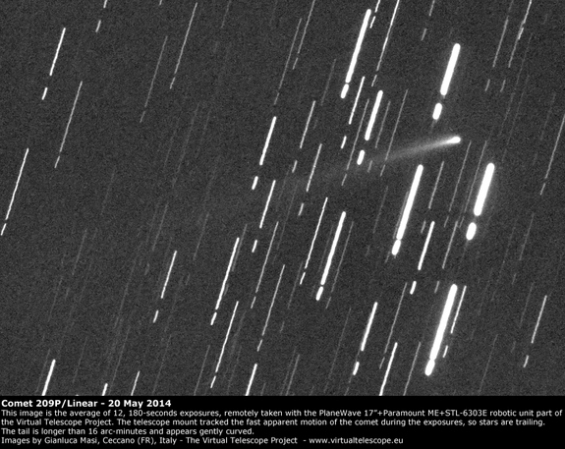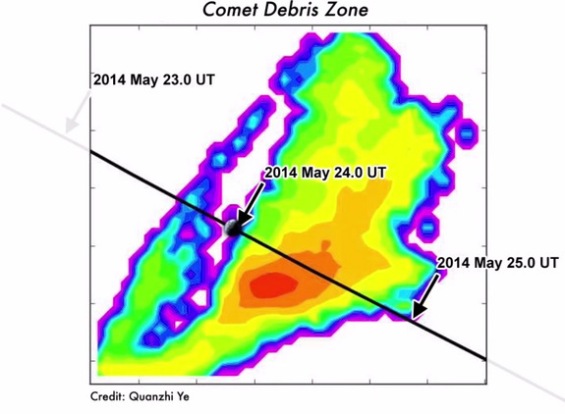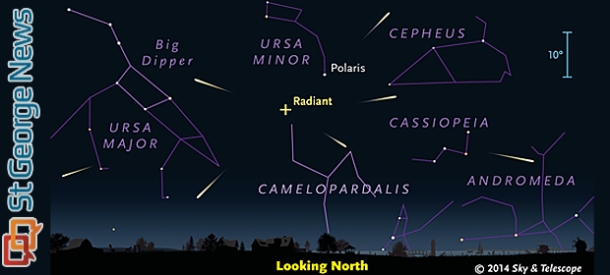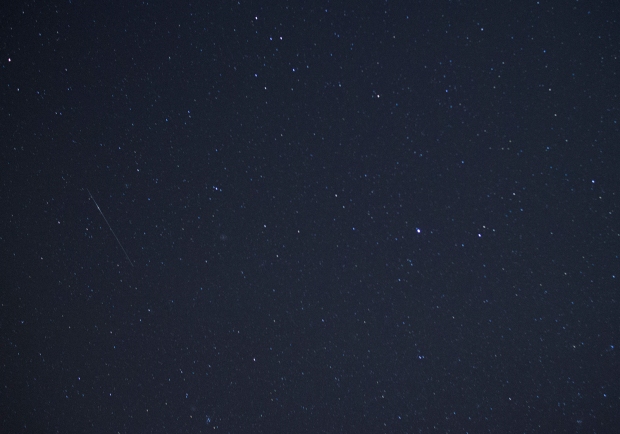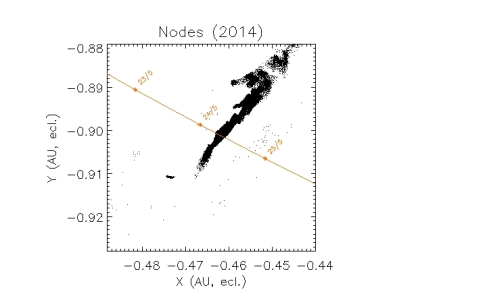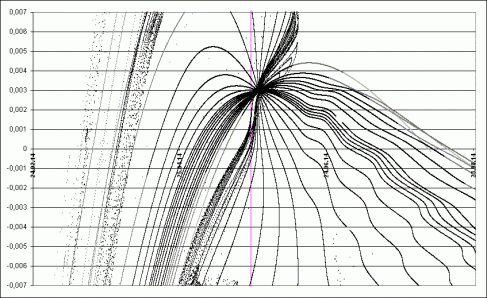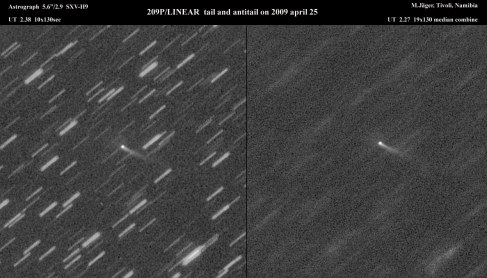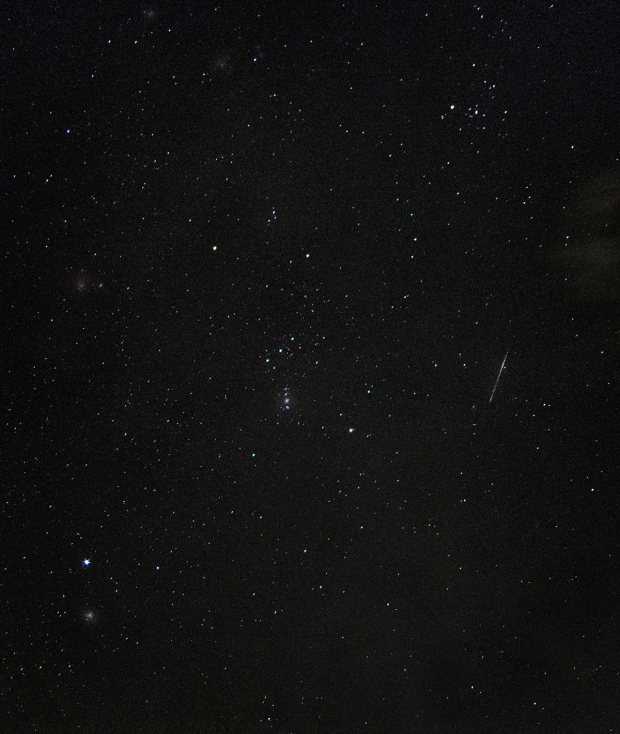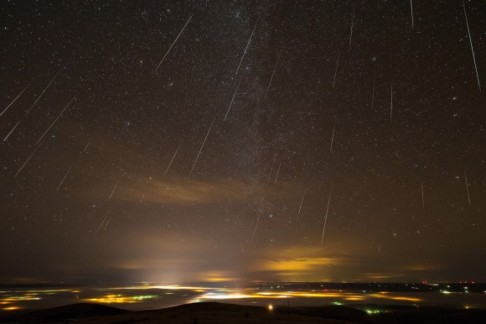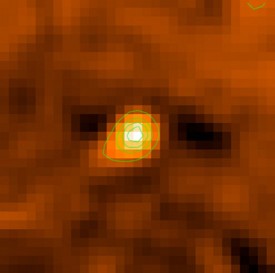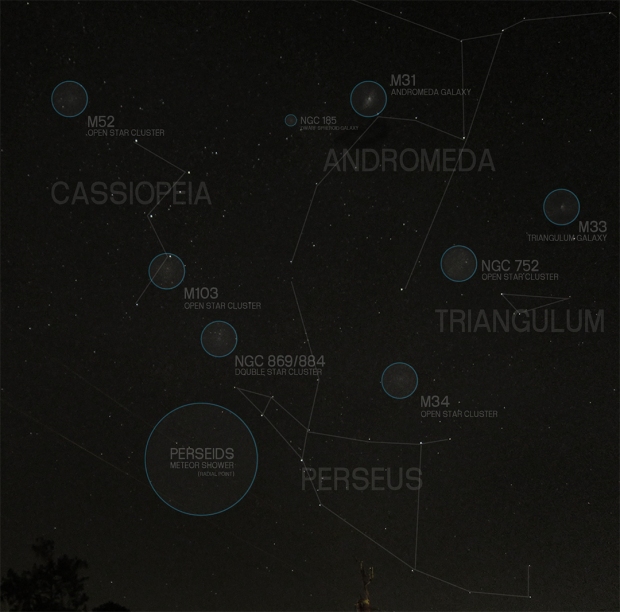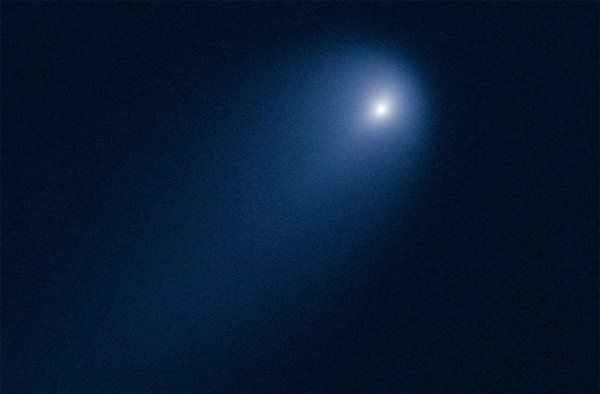Over the past two decades, celestial dynamicists have gotten very good at divining when meteoric activity will spike. Their computer models can track how dust ejected by a comet near each perihelion pass gets distributed into strands of particles over time. Their calculations show that dust tends to stay concentrated close to the nucleus, and that the strands themselves often converge in space close to the orbit’s perihelion.
Now these number-crunchers are telling us make sure May 24, 2014, is circled on our skywatching calendars. On that date, we might experience the most dramatic display of “shooting stars” in more than a decade.

According to predictions, a little-known comet will pass perihelion in early May of 2014 and, two weeks later, sandblast Earth with dust particles spread along its orbit.
NASA / JPL / Horizons
The source of all this buzz is a little-known periodic comet called 209P/LINEAR. Discovered by an automated sky survey in 2004, it follows a looping but relatively tight path that carries it just inside Earth’s orbit every 5.04 years. According to dynamicist Syuichi Nakano, Comet 209P/LINEAR’s next perihelion occurs on May 6, 2014, at a point 0.969 astronomical unit from the Sun and with Earth not far away.
Just 18 days later, we should cross through dozens of particle streams shed during past orbits. The predictions are still rough, but three different models suggest the sky show could be spectacular. “All the trails ejected between 1803 and 1924 cross Earth’s path in May 2014,” notes Jérémie Vaubaillon (IMCEE, France). “As a consequence, this shower might as well be a storm,” with the potential to see more than 1,000 meteors per hour under ideal conditions.
That’s the same conclusion reached by Russian meteor sleuth Mikhail Maslov, who thinks at least 100 to 400 meteors — and quite possibly many more — should rain down per hour. But he cautions that Comet 209P/LINEAR is small and hasn’t been observed much. Moreover, outbursts of meteors linked to this comet haven’t been noted in the past.
The potential for a strong showing in 2014 was first pointed out by meteor specialists Esko Lyytinen and Peter Jenniskens, but detailed calculations by Vaubaillon and Maslov have heightened the anticipation.

(This perspective shows the hemisphere of Earth that will be facing the incoming dust particles from Comet 209P/LINEAR when the activity peaks on May 24, 2014. Skywatchers in southern Canada and the continental U.S. will be especially well positioned to watch the sky show.
Mikhail Maslov)
The best part of all this prognostication, at least from a U.S. perspective, is that the meteor display should peak between 7:00 and 8:00 Universal Time on May 24th — it’ll be dark across virtually all of North America. The meteors’ apparent point of origin (radiant) will be quite far north in declination (in Camelopardalis, says Vaubaillon), again favoring the U.S. and Canada. And the Moon will be a narrow waning sliver just a few days from new. Everything is “go” for the best meteor display since the dramatic Leonid showers of the late 1990s.
So what will it take to refine estimates of how many “209P-id” meteors we might see? More observations of the comet’s nucleus will certainly help. Unfortunately, right now it’s well beyond the orbit of Mars and a dauntingly faint 22nd magnitude. But with such a dramatic performance predicted for 2014, don’t be surprised if professional astronomers start slewing their best weapons its way in the coming months
